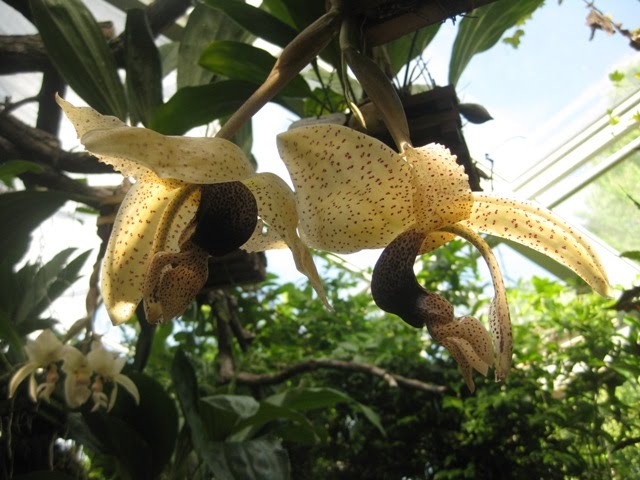After about 7 hours in the air from Abu Dhabi, it was a welcome change to step out into 24C temperatures at København (Copenhagen) for the short train trip into the city and our hotel.
A short while later we found ourselves down at Nyhavn for the obligatory photo stop among the hordes of other tourists.
Nyhavn, the most popular spot in København
We joined a late afternoon cruise around the waterways and harbour for something like 30DKK each. About an hour on the water took us around some posh residences, a "free swimming area" and where the Little Mermaid was; we saw her there 2 years ago but she was in Shanghai this time.
A 1950s destroyer from the Cold War and the mast crane used for lifting the masts of wooden sailing ships built in the nearby dockyards.
"If you now look up to your left you can see the unique spiral spire
of Christianshavn's Torv" she was saying, "you can get a
great view from up there".
Next morning it was off on the bus to Christianshavn to climb the tower:
and this is what you can see from up the top:
København
The nearby naval museum was very informative and paid attention to the Battle of Copenhagen in 1801 which took place not far from where the destroyer is moored in the photo above! I also learned quite a lot about how the Danish navy was built up to help keep the Baltic closed to the the Russians should the Cold War have warmed up.
Christainshavn.
The canals were lined with yachts during the summer holidays from as far away as Holland.

The Baltic is a very popular place for cruising and many harbours are destinations for the holiday on the water. Note the spiral church tower.
Royal Copenhagen cups.
"You can't take those home, the excess baggage charge is a bit much!"
After two nights in København it was time to continue with our itinerary by train to Sweden on 11 July. We arrived back in Denmark in Fredrikshavn on 5 August after the ferry crossing from Göteborg (Gothenburg). Sweden and Norway to follow in later blogs.

More boats at Rönnerhavn, 3 km north of Fredrikshavn.
On the train again after an overnight stay in Fredrikshavn, it was down to Århus. The main attraction here in Den Gamle By. New Zealand has Shantytown: there are other similar villages in many cities and towns around the world such as Oslo, Helsinki and Bucharest.
Many old buildings throughout Denmark have been moved and restored in the old town area of Århus.
Grey skies mean rain!
The mill pond at Den Gamle By.
Another one nighter in Århus and it was time to head to Ribe near the west coast of Denmark. Ribe was 1300 years old in 2010!!! A wonderfully preserved rather than restored town.
Ribe as night falls.
The view from the top of the church tower at Ribe
The North Sea is about 5 km away. Ribe used to be an important harbour town and is basically at sea level. The land around is flat and a very rich farming area: irrigation is not really necessary in this part of Scandanavia.
A backyard in Ribe from the tower.
The old houses in Ribe can only be bought if you live permanently in them! A great idea I think.
The hotel outside you meet the nightwatchman to
join up on his rounds every evening.
He takes you on a tour of the town and includes the riverside and the flood marker.
The top mark is 1634!
Lower flood levels were in 1908 and 1911. Such floods have been caused by storm surges in the North Sea and haven't occurred since dykes were built after the last one in 1911 in this area of Denmark. The Thames Barrier in London was begun in 1974 after a disastrous storm surge and flood in 1953.
Ribe water way.
After 3 nights in Ribe it was time to head for Belgium and the WW1 battlefields near Ieper (Ypres)





































